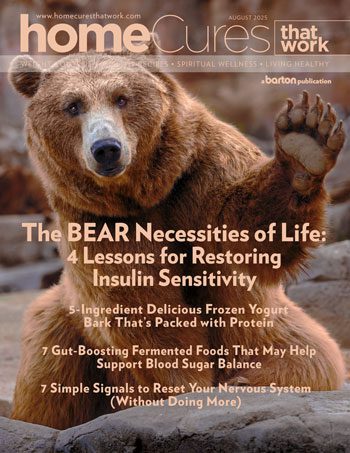Dr. Saunders’ Personal Alzheimer’s Protection Plan
5 Prevention Techniques to Protect Your Brain Tissue
“I think he has Alzheimer’s disease…” the wife of a man in his seventies began. Larry was having difficulty concentrating, had problems with memory and wasn’t able to work anymore. He seemed depressed all the time. We did some testing and found that all those years of welding had built up a large amount of heavy metals in his body – including lead. After a series of chelation treatments to “get the lead out” his wife said, “He’s like a teenager! He smiles again. He’s working, laughing, playing with the grandchildren and…” she leans forward and whispers, “We have sex again.”
Alzheimer’s is a decline in memory and cognition, which means the ability to think. There are many causes of declining mental function, as we noted above. The loss of brain function is not always Alzheimer’s disease. Unfortunately, most doctors will “diagnose” every old person with dementia as “Alzheimer’s” and not look for any other cause. It’s important for family members to know that there are many other ways to lose memory and anyone — at any age — with thinking problems needs proper testing to find out why.
This topic is personally important to me because my family moved into the home of my grandparents to take care of my grandfather who was diagnosed with Alzheimer’s disease. It was a very difficult job for four adults to manage his care because he didn’t recognize us, or even his wife of over fifty years. Now, I’m told I am at an increased risk of having this disease, so I have tried to find how to avoid and prevent it.
Here’s what I’ve learned.
Avoid Inflammation
Inflammation comes from our food. When we eat high-calorie and low-nutrient foods we create inflammation. These include all processed foods, sweets, starchy foods, and fatty foods. In short, all the things your mom told you to avoid! Instead, eat high-nutrient, low-calorie foods, such as fresh vegetables, fruit, whole grains, beans, nuts and seeds.
Moreover, we can turn off the genes that produce inflammation by fasting. One to three days per month of fasting will keep most inflammation at bay. I know of one patient who was bent over with a genetic arthritis called Ankylosing Spondylitis. He went to Russia and went on a twenty-day fast that put his disease into complete remission. He is still doing well — as long as he fasts for several days per month.
Detoxify Continually
We can find all sorts of “Detox” or “colon cleanse” programs on the internet, but the best way to keep toxins out is first to not let them in and second, to continually clean. What would happen to your kitchen if you only cleaned it once per month — or once a year? Do you only bathe once a week? The inside needs to stay clean like the outside. So, while many “cleansing” programs may work, they are only a one-time experience. What about the rest of the time? What we really need is continual cleaning. This is how you keep your insides clean and continually detoxify:
- Eat lots of fiber. Try to avoid “fiber enriched” foods like cereals and fiber bars because they lack a balance of soluble and insoluble fibers. Instead, eat fruit, vegetables, whole grains, nuts, legumes and seeds. Don’t eat anything that has the fiber taken out like white flour products, pasta, white rice, and processed foods.
- Eat green foods. The chlorophyll in foods actually binds to heavy metals and other toxins to remove them from the body. In fact, the best way to “chelate” or remove mercury is by eating cilantro or coriander leaf.
- Sweat. The glands in our body concentrate toxins such as heavy metals; so sweating helps us to rid the body of the things that can impair our mental function. Some people use various types of sweat-producing machines: saunas, hot tubs and so forth, which are fine, but exercising to sweat several times per week is free and has further benefits, as we’ll discuss.
Stay Physically Active
Physical activity keeps our blood flowing, including blood circulation to the brain. In fact, the single best thing anyone can do to stay out of a nursing home is to walk. One of my patients is 96 and still walks a mile to the store every day and carries the bags home. Her granddaughter offers to drive her, but she insists it keeps her young – and it does!
It is important not to overdo exercise by trying to do more than you can. Do what you enjoy and make it easy, and then increase by very small increments, such as adding a few more steps, or a minute, to your workout every week. The small increases will add-up to a large amount in a year.
Moreover, you don’t have to workout every day. The evidence shows that only a few days a week is adequate.
Stay Mentally Active
“Use it or lose it” is as true of the brain as it is of our muscles. The more we use our brains, the better they work for us. Activities that don’t require the use of the brain such as watching TV or movies actually cause the brain tissue to atrophy. The best way to determine this is if you can get better or improve in an activity, then it’s good for you. You can’t get better at watching TV!
At the UCLA Brain Research Institute where I worked, many brains are stored for study. When the microscopic “neurofibrillary tangles” were first described as diagnostic of Alzheimer’s disease, many brain functions were tested and found to contain them. In some cases, when the family was contacted they denied any lack of memory or mental manifestations of the disease. It was found that even if people had the damage to brain tissues, they didn’t show symptoms if they remained mentally active.
Learn new things. When people hear about the importance of keeping the mind active, they are often told to play games, crossword puzzles, Sudoku, bridge, and so forth. While this may be helpful, the best way is to learn and grow. Start a new hobby. Learn a new language (this is an excellent way to keep the mind active). Go back to college. Take on projects. Volunteer your services or your experience. There is so much need, both locally and out in the world.
Consider Supplements
The previous steps are the most important part of the prevention of Alzheimer’s disease, but there are other ways to both slow the progression and reverse the disease. I don’t prescribe drugs for Alzheimer’s disease because the available drugs have more risks than benefit. However, there are some supplements that often help and don’t hurt.
A recent study showed a reversal of brain lesions in rats that were given niacinamide, a form of vitamin B3. Don’t get niacin because it will cause flushing.
Other supplements that may be useful for improving mental function and memory include:
- Huperzine A – 50 mcg per day
- Vinpocetine – 5-10 mg per day
- Ginkgo Biloba – three times per day
- Magnesium – 400 mg per day
- Niacinamide – 2 grams per day
There are also many nutritional supplements available for Alzheimer’s disease, all of which include the B-vitamins because these are necessary for brain function. A good one that I would recommend comes from Dr. David Perlmutter, MD, called Brain Sustain.
Alzheimer’s disease is a significant problem as the population ages. Our research shows that it is preventable and may even be reversible. As in any illness, “An ounce of prevention is worth a pound of cure.”



















